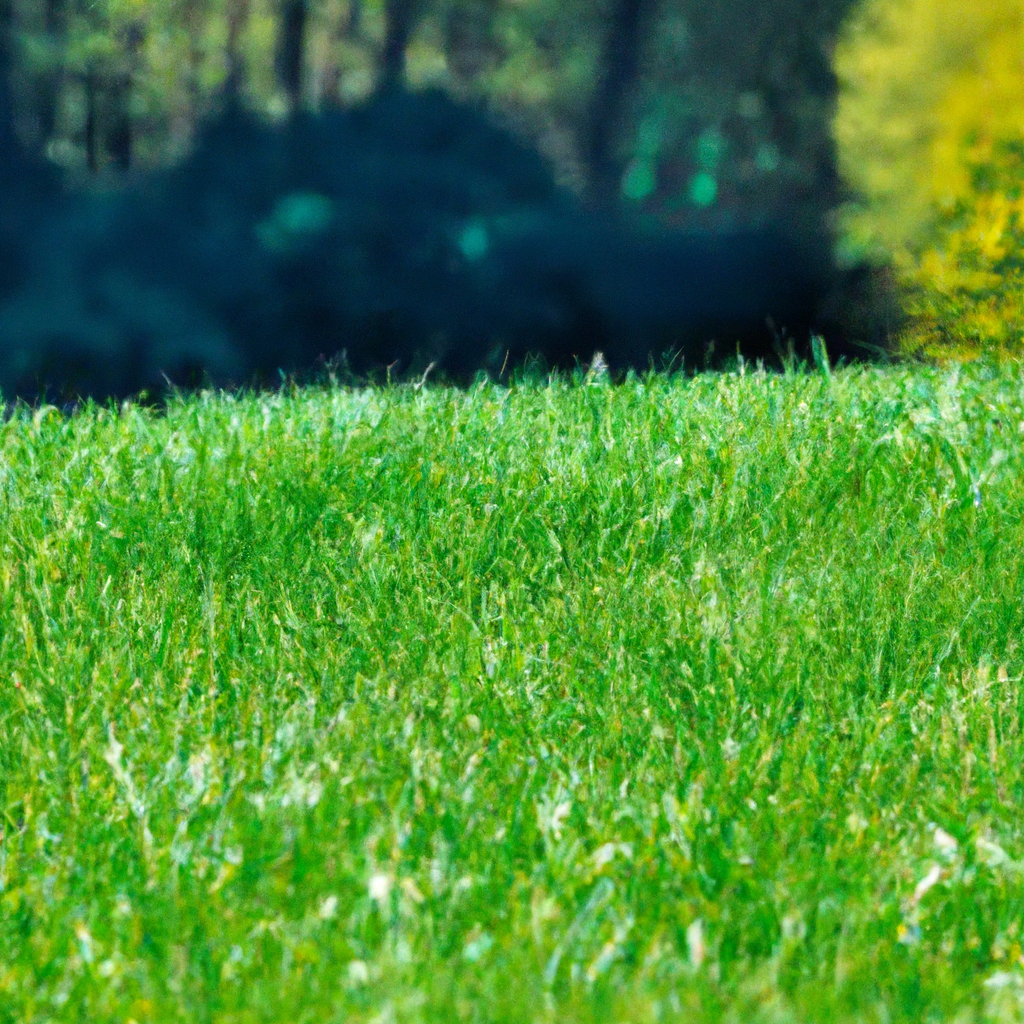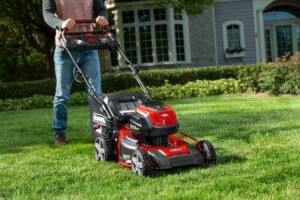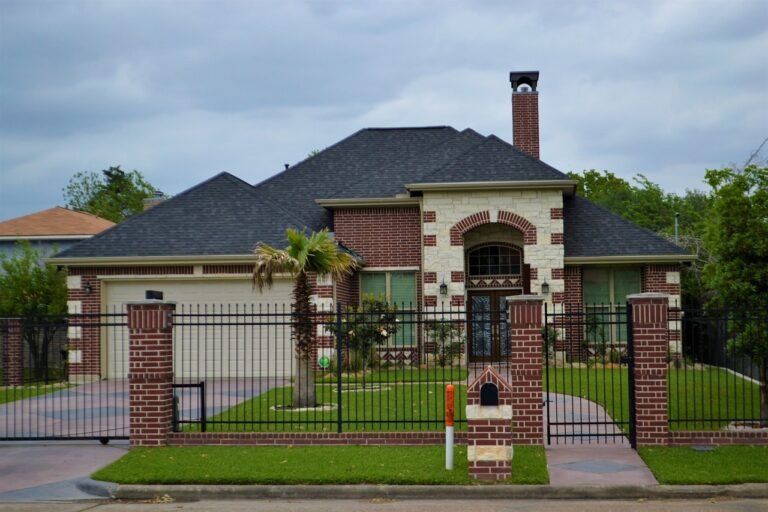Are you wondering how to enhance the sunlight exposure in those shaded areas of your lawn? Having a well-illuminated yard not only adds aesthetics but also promotes healthy growth for your plants and grass. In this article, we will explore some practical and easy-to-implement tips that will help you significantly improve the amount of sunlight your shaded lawn receives. Whether you’re a gardening enthusiast or simply looking to boost your curb appeal, these solutions will ensure your shaded lawn thrives under the sun. So, let’s dive in and brighten up those dark corners of your yard!
Choosing the Right Grass for Shaded Areas
When it comes to improving sunlight exposure in shaded areas of your lawn, one of the key factors to consider is the type of grass you choose to plant. Different types of grass have varying levels of tolerance to shade, so it’s important to select a variety that can thrive in less sunlight. Some grass varieties that are known for their shade tolerance include Fine Fescue, St. Augustine, and Zoysia grass.
Understanding Different Types of Grass
Before selecting a shade-tolerant grass variety, it’s important to understand the different types of grass and their specific characteristics. Fine Fescue, for example, is a cool-season grass that grows well in shady areas and requires less maintenance. St. Augustine, on the other hand, is a warm-season grass that can tolerate moderate shade and is known for its ability to fill in bare spots. Zoysia grass is also a warm-season grass that can tolerate shade, drought, and heavy foot traffic.
Selecting Shade-Tolerant Grass Varieties
Once you have a good understanding of the different types of grass, it’s time to select the shade-tolerant grass variety that best suits your needs. Consider factors such as the amount of shade in your lawn, the climate in your area, and the level of maintenance you are willing to undertake. Fine Fescue is a popular choice for heavily shaded areas, while St. Augustine and Zoysia grass are suitable for partially shaded areas.
Consideration of Lawn Usage
In addition to shade tolerance, it’s also important to consider the usage of your lawn when choosing the right grass for shaded areas. If you have children or pets who will be using the lawn frequently, you may need a grass variety that can withstand heavy foot traffic. Zoysia grass is known for its ability to handle high traffic, making it a suitable choice for shaded areas that will be frequently used.
Pruning and Trimming Trees and Shrubs
Another effective way to improve sunlight exposure in shaded areas of your lawn is through proper pruning and trimming of trees and shrubs. Overhanging branches and dense foliage can significantly block sunlight from reaching your lawn, so it’s essential to identify and address these issues.
Identifying Overhanging Branches
Take the time to carefully inspect your trees and shrubs and identify any overhanging branches that may be casting shadows on your lawn. These branches not only block sunlight but can also contribute to the accumulation of excessive moisture, leading to poor lawn health. By identifying and removing these branches, you can significantly improve sunlight exposure in shaded areas.
Trimming and Pruning Techniques
When it comes to pruning and trimming trees and shrubs, it’s important to use proper techniques to ensure the health and aesthetics of your plants. Start by removing dead or diseased branches, as these can inhibit sunlight penetration and promote the spread of diseases. Additionally, thinning out dense areas of foliage can allow more sunlight to reach the ground. Regular trimming and pruning can help maintain the proper shape and size of your trees and shrubs while enhancing sunlight exposure.
Consulting with an Arborist
If you’re unsure about the best pruning and trimming practices for your specific trees and shrubs, it’s always a good idea to consult with an arborist. An arborist is a trained professional who specializes in the care and maintenance of trees and shrubs. They can provide expert advice and guidance on pruning techniques, as well as identify any potential issues that may be affecting sunlight exposure in shaded areas of your lawn.

Thinning Out Vegetation
In addition to pruning and trimming trees and shrubs, thinning out dense vegetation can also improve sunlight exposure in shaded areas of your lawn. Overgrown bushes, vines, and ground covers can block sunlight and prevent it from reaching the ground, hindering the growth of grass and other plants.
Identifying Dense Vegetation
Take a close look at the vegetation in your yard and identify areas where the plants have become densely packed. These areas typically have low sunlight penetration and should be addressed to improve sunlight exposure. Look for areas where the plants are growing close together, forming a thick canopy that blocks sunlight.
Removing Excessive Undergrowth
To thin out dense vegetation, start by removing excessive undergrowth. Use pruning shears or a small hand saw to cut back any low-lying branches or small plants that are preventing sunlight from reaching the ground. By clearing away the excess undergrowth, you can allow more sunlight to penetrate through and reach the grass and other plants in shaded areas.
Selective Pruning and Trimming
Selective pruning and trimming of larger plants can also help thin out dense vegetation. Identify larger bushes or shrubs that are contributing to the density and carefully prune them to allow more space and sunlight between branches. Be cautious not to remove too much foliage, as this can harm the plants. Aim to strike a balance that allows for improved sunlight exposure without causing damage.
Strategic Tree and Shrub Relocation
For areas that are heavily shaded and cannot be easily remedied through pruning and thinning, strategic tree and shrub relocation may be necessary to improve sunlight exposure. By assessing the potential for relocation, determining the best new locations, and seeking professional assistance, you can create a well-balanced and sunnier environment.
Assessing the Potential for Relocation
Start by assessing the trees and shrubs in shaded areas and determining if they can be relocated. Consider factors such as the size and type of the plant, its root system, and its overall health. Some plants may be more suitable for relocation than others, so it’s important to carefully evaluate each one.
Determining the Best New Locations
Once you have identified the plants that can be relocated, determine the best new locations for them. Choose areas in your lawn that receive more sunlight and have adequate space for the plants to grow. Consider the requirements of each plant, such as sun exposure and soil conditions, to ensure their successful relocation.
Seeking Professional Assistance
Relocating trees and shrubs can be a complex process that requires expertise and experience. To ensure the successful transplantation of your plants, consider seeking professional assistance from a landscaper or tree service company. They will have the necessary tools and knowledge to safely remove and relocate the plants, increasing sunlight exposure in shaded areas.
Creating Reflective Surfaces
Another way to enhance sunlight exposure in shaded areas is by creating reflective surfaces that can help redirect and intensify sunlight. Using light-colored mulch or white gravel and stones can effectively reflect sunlight onto the shaded areas, creating a brighter and more sunlit environment.
Understanding Sunlight Reflection
Sunlight reflection occurs when light bounces off a surface and is redirected into another area. By using materials that have a high reflective index, you can effectively amplify sunlight and direct it towards shaded areas. This creates a brighter and more illuminated space in your lawn.
Using Light-Colored Mulch
One way to create reflective surfaces is by using light-colored mulch. Mulch is typically used to conserve moisture and suppress weed growth, but it can also contribute to sunlight reflection. Opt for light-colored mulch, such as straw or light brown wood chips, as they have a higher reflective index compared to darker mulch. Apply a generous layer of mulch in shaded areas to help redirect sunlight towards the ground.
Application of White Gravel or Stones
Another option for creating reflective surfaces is by using white gravel or stones. White surfaces have a high reflective index, making them ideal for redirecting sunlight. Apply a layer of white gravel or stones in shaded areas to help increase sunlight exposure. This can be particularly effective in areas with heavy shade or where other methods of improving sunlight exposure may not be feasible.
Installing Artificial Sunlight Sources
In cases where natural sunlight is limited, installing artificial sunlight sources can be a viable solution. Solar-powered lighting options and solar-powered grow lights can provide additional light for shaded areas, helping plants thrive and improving overall lawn health.
Exploring Solar-Powered Lighting Options
Solar-powered lighting options, such as solar-powered spotlights or pathway lights, can be strategically installed in shaded areas to provide additional light. These lights charge during the day using sunlight and illuminate the shaded areas during the evening, creating a well-lit environment. This not only improves sunlight exposure but also enhances the overall aesthetics of your lawn.
Using Solar-Powered Grow Lights
Solar-powered grow lights are specifically designed to provide artificial sunlight for plants. These lights harness solar energy during the day, store it in built-in batteries, and then emit light during the evening. By positioning these grow lights strategically in shaded areas, you can ensure that your plants receive the necessary light for photosynthesis and growth.
Positioning Light Fixtures Strategically
To make the most of artificial sunlight sources, it’s important to position the light fixtures strategically. Place solar-powered lights or grow lights in areas where natural sunlight is limited or nonexistent. This will help create a more balanced and well-illuminated environment, promoting better growth and overall health for your plants.

Amending Soil Composition
The soil composition plays a crucial role in the growth and health of your lawn. Improving the soil quality in shaded areas can help enhance sunlight exposure and ensure proper nutrient uptake by plants.
Conducting a Soil Test
Start by conducting a soil test in shaded areas to assess the existing composition. The test will provide valuable information about the pH level, nutrient content, and overall fertility of the soil. Based on the results, you can determine the necessary amendments needed to improve soil quality.
Improving Drainage and Aeration
Shaded areas often suffer from poor drainage and inadequate aeration due to limited sunlight and the presence of dense vegetation. To improve these conditions, consider adding organic matter, such as compost or peat moss, to the soil. Organic matter helps improve soil structure, allowing for better water drainage and air circulation. This, in turn, enhances sunlight exposure and promotes healthier growth for your plants.
Adding Organic Matter
In addition to improving drainage and aeration, adding organic matter to the soil can provide essential nutrients for your plants. Compost, aged manure, or other organic materials can be incorporated into the soil to increase its fertility. This will support the growth and development of grass and other plants in shaded areas, ensuring they receive the necessary nutrients for optimal health.
Appropriate Irrigation Techniques
Proper irrigation is crucial for the health of your lawn, especially in shaded areas where soil moisture levels can be challenging to maintain. Using drip irrigation systems, adjusting watering frequency and timings, and avoiding overwatering can help ensure optimal moisture levels for your plants.
Using Drip Irrigation Systems
Drip irrigation systems are an excellent choice for shaded areas as they deliver water directly to the plant roots, minimizing water loss due to evaporation. This targeted approach helps ensure that the plants receive adequate moisture without overwatering. By installing a drip irrigation system in shaded areas, you can maintain optimal soil moisture levels and promote healthy plant growth.
Watering Frequency and Timings
In shaded areas, it’s important to adjust the watering frequency and timings to suit the specific needs of your plants. Since these areas receive less direct sunlight, the soil takes longer to dry out. As a general rule, water deeply but less frequently to encourage deep root growth. Monitor the soil moisture levels regularly and adjust the watering schedule accordingly. Avoid watering in the evenings, as this can promote fungal growth. Instead, aim to water in the early morning when the sun is rising.
Avoiding Overwatering
While maintaining proper soil moisture is essential, it’s equally important to avoid overwatering shaded areas. Excessive water can lead to waterlogged soil, which can be detrimental to plant health. To prevent overwatering, monitor the soil moisture levels regularly and adjust the watering schedule accordingly. Ensure that the soil has a chance to dry out slightly between watering to prevent waterlogged conditions.

Raised Bed Gardening
Raised bed gardening is a technique that can be particularly beneficial in shaded areas. By constructing raised beds, choosing the right plants, and providing adequate sunlight, you can create a thriving garden even in areas with limited direct sunlight.
Constructing Raised Beds
To create raised beds, build a framework using rot-resistant lumber or other suitable materials. The height and size of the beds can vary depending on your specific needs and available space. Line the bottom of the beds with a layer of landscape fabric to prevent weed growth and ensure good drainage. Fill the beds with a high-quality, well-draining soil mix, enriched with organic matter.
Choosing the Right Plants
When it comes to selecting plants for raised beds in shaded areas, it’s important to choose varieties that are well-suited for lower light conditions. Shade-loving plants such as hostas, ferns, and impatiens thrive in areas with limited direct sunlight. Additionally, consider planting edible crops that are known for their shade tolerance, such as leafy greens, herbs, and certain root vegetables.
Providing Adequate Sunlight
While raised beds can provide an advantage in terms of soil quality and drainage, it’s still important to ensure that the plants receive adequate sunlight. Position your raised beds in areas that receive the most sunlight throughout the day. If necessary, prune nearby trees or shrubs to allow more light into the raised bed area. By providing the right amount of sunlight, you can create an ideal environment for plants to thrive.
Professional Landscape Consultation
If you’re unsure about the best strategies to improve sunlight exposure in shaded areas of your lawn, or if you want expert advice and recommendations, consider engaging with a qualified landscape designer. They can provide valuable insights and suggest tailored solutions for your specific situation.
Engaging with a Qualified Landscape Designer
A qualified landscape designer has the knowledge and expertise to assess your lawn and provide professional recommendations. They can analyze your current landscape, identify areas with limited sunlight, and propose effective strategies to improve sunlight exposure. A landscape designer can also help you envision and plan a redesign that maximizes sunlight in shaded areas.
Getting Expert Advice and Recommendations
By working with a landscape designer, you can benefit from their expert advice and recommendations. They can offer insights into plant selection, proper pruning techniques, and other strategies to enhance sunlight exposure. Their expertise can save you time and effort in experimenting with different solutions, ensuring that you make the most informed decisions for your lawn.
Landscape Redesign for Improved Sunlight Exposure
If your shaded areas require a more comprehensive solution, a landscape designer can assist with a complete redesign. They can help create a layout that optimizes sunlight exposure, considers your specific needs and preferences, and creates a visually appealing and functional outdoor space. With their assistance, you can transform your shaded lawn into a sunlit oasis.
In conclusion, improving sunlight exposure in shaded areas of your lawn involves a combination of strategies such as choosing the right grass, pruning and thinning vegetation, strategic tree and shrub relocation, creating reflective surfaces, installing artificial sunlight sources, amending soil composition, adopting appropriate irrigation techniques, practicing raised bed gardening, and seeking professional landscape consultation. By implementing these techniques, you can create a well-balanced and sunlit environment that promotes healthy plant growth and enhances the overall aesthetics of your lawn.




